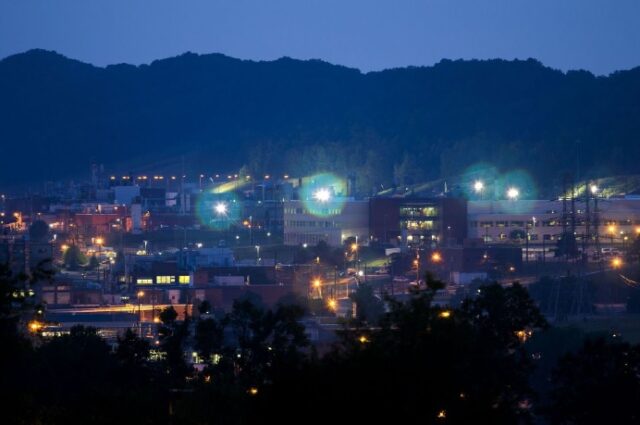Publié sur LinkedIn, 19 février 2025.
En rebond à un article sur le site de CNN, 14 février 2025
Trump officials fired nuclear staff not realizing they oversee the country’s weapons stockpile, sources say | CNN
J’avais eu la chance de participer à un séminaire fermé à Oxford sur les risques « industriels » liés aux armes nucléaires (USA, Russie, UK, F, …), animé notamment par Scott Sagan auteur de The Limits of Safety: Organizations, Accidents, and Nuclear Weapons (Princeton Studies in International History and Politics)
Extraits : « Environmental tragedies such as Chernobyl and the Exxon Valdez remind us that catastrophic accidents are always possible in a world full of hazardous technologies. Yet, the apparently excellent safety record with nuclear weapons has led scholars, policy-makers, and the public alike to believe that nuclear arsenals can serve as a secure deterrent for the foreseeable future. In this provocative book, Scott Sagan challenges such optimism. Sagan’s research into formerly classified archives penetrates the veil of safety that has surrounded U.S. nuclear weapons and reveals a hidden history of frightening « close calls » to disaster. »
Fil général du séminaire : il ne faut pas trop plaisanter avec la sécurité de ces dispositifs.
En s’inspirant de « The Hunt for Red October », on devrait dire : « Those things don’t react too well to total confusion ».
Il ne manquerait plus que le massacre à la tronçonneuse finisse par lézarder des systèmes aussi cruciaux…
La Commission présidentielle d’enquête sur l’accident nucléaire (civil) de Three Mile Island
souligna in fine que 80% des facteurs contributifs à l’accident étaient de nature, non pas
technique, mais organisationnelle et humaine. Ébranler gravement un système organisationnel
complexe ne peut pas ne pas avoir d’impact profond sur la sécurité de l’ensemble. En matière
de nucléaire militaire, comme pour le reste.
Commentaires P.L. en complément
Extraits de mon livre « Le Continent des imprévus » :
Août 1994
Séminaire étonnant à Oxford, au coeur des risques « technologiques » les plus extrêmes. […]
Scott Sagan, vient de publier un ouvrage documenté sur les risques d’accidents majeurs pouvant être provoqués par les missiles nucléaires (en dehors de tout engagement guerrier). La conférence n’a rien de la réunion de quelques activistes : elle est organisée sous l’égide de l’OTAN par le Center for International Security and Arms Control de l’université Stanford, et donc hébergée par l’université la plus prestigieuse d’Europe.
Je m’attends à des propos marqués par l’understatement absolu. Erreur : la partie américaine insiste, encore et encore, sur les dangers majeurs représentés par les armes nucléaires, approchées comme des installations industrielles à très haut risque. Et notre universitaire de Stanford de donner maints cas précis et analysés dans le détail (il bénéficie à l’évidence d’un soutien actif de cercles stratégiques américains).
Je vais de surprises en surprises : le chef de la délégation russe – tout en réfutant officiellement la thèse américaine et défendant constamment le principe d’une absence totale de risque – se trouve à plusieurs reprises au bord des larmes à déplorer des accidents impossibles qui ont bien eu quelque conséquence et les faibles moyens dont il dispose. »
Autres commentaires PL
Il fut dit dans les couloirs que l’opération américaine visait d’abord à convaincre leurs adversaires russes qu’il fallait absolument veiller à la sécurité de ces systèmes à haut risque. Il serait détonnant que, lors de la rencontre prévue entre un Trump qui cherche à trouver en Poutine-le-fort une marque de respect de ce nouveau père, le maître du Kremlin adjure son serviteur zélé qu’il ferait bien de ne pas faire n’importe quoi avec ses armes de destruction massive. Il pourrait même lui proposer que des officiels russes viennent remplacer gracieusement ceux qui auront été virés par le camarade Tesla.
Ajoutons, carambolage de l’histoire, qu’au nombre des « incidents » cités et décortiqués par Scott Sagan il y avait le crash d’un B52 chargé d’armes nucléaires, au… Groënland (Thulé,1968).
Bombe perdue, dispersion de Plutonium, tritium, etc. Le Groënland serait fondé à demander réparation, en calculant les problèmes posés par un poison ayant l’éternité comme domaine.
Peut-être 500 milliards de Dollars comme première base de « négociation » ?
Trump officials fired nuclear staff not realizing they oversee the country’s weapons stockpile, sources say | CNN

CNN –
Trump administration officials fired more than 300 staffers Thursday night at the National Nuclear Security Administration — the agency tasked with managing the nation’s nuclear stockpile — as part of broader Energy Department layoffs, according to four people with knowledge of the matter.
Sources told CNN the officials did not seem to know this agency oversees
America’s nuclear weapons.
An Energy Department spokesperson disputed the number of personnel affected, telling CNN that “less than 50 people” were “dismissed” from NNSA, and that the dismissed staffers “held primarily administrative and clerical roles.”
The agency began rescinding the terminations Friday morning.
Some of the fired employees included NNSA staff who are on the ground at facilities where nuclear weapons are built. These staff oversee the contractors who build nuclear weapons, and they inspect these weapons.
It also included employees at NNSA headquarters who write requirements and guidelines for contractors who build nuclear weapons. A source told CNN they believe these individuals were fired because “no one has taken anytime to understand what we do and the importance of our work to the nation’s national security.”
Members of Congress made their concerns about the NNSA firings known to the Energy Department, a Hill staffer told CNN. A person with knowledge of the matter told CNN that senators visited Energy Sec. Chris Wright to express concern about the NNSA cuts.
“Congress is freaking out because it appears DOE didn’t really realize NNSA oversees the nuclear stockpile,” one source said. “The nuclear deterrent is the backbone of American security and stability – period. For there to be any even very small holes poked even in the maintenance of that deterrent should be extremely frightening to people.”

NNSA has a total of 1800 staff at facilities around the country. The only probationary staffers exempt from the Thursday-night firings were those who work at its Office of Secure Transportation, the office in charge of driving or otherwise transporting nuclear weapons around the country securely, one person familiar told CNN.
“There is strong support on the Hill for NNSA in nuclear modernization writ large,” one source told CNN. “Clearly, NNSA is a critical agency. There have been lawmakers with concerns.”
The agency made the about face Friday morning; during a meeting, acting NNSA administrator Teresa Robbins said the agency had received direction to rescind the termination of probationary employees. Probationary workers have typically been employed for less than a year, or two years in some cases, and have fewer job protections and rights to appeal.
Robbins added on Friday that if probationary NNSA employees had not yet been fired, their jobs were now safe and all NNSA employees whose access to the agency’s network and internal IT systems was shut off would be turned back on, one source told CNN.
The source said Robbins added, “There is a good probability that most or all probationary employees who were fired could return.”
Another source cautioned the situation was extremely fluid and said “we don’t know” how many people will be returning.
An NNSA spokesperson referred CNN’s questions to DOE.
“The Energy Department will continue its critical mission of protecting our national security and nuclear deterrence in the development, modernization, and stewardship of America’s atomic weapons enterprise, including the peaceful use of nuclear technology and nonproliferation,” the DOE spokesperson told CNN.
Political officials at the Energy Department told its non-political HR administrators to cite poor performance personnel files as a justification for firing the employees, the source said. Frustrated by the pressure from political appointees, two of those HR employees submitted their resignations on Friday.
A DOE spokesperson declined to comment on the poor-performance rationale for the firings. CNN has reached out to the two employees who resigned.
In addition to overseeing America’s nuclear weapons, the NNSA also helps secure nuclear material nationwide. Sources told CNN it’s a critical mission, pointing to the Russian drone attack on a Chernobyl power plant reactor in Ukraine on Thursday.
“NNSA maintains sensors in Ukraine to help track nuclear risks, whether intentional or unintentional,” a source said, adding the layoffs are “frightening.”